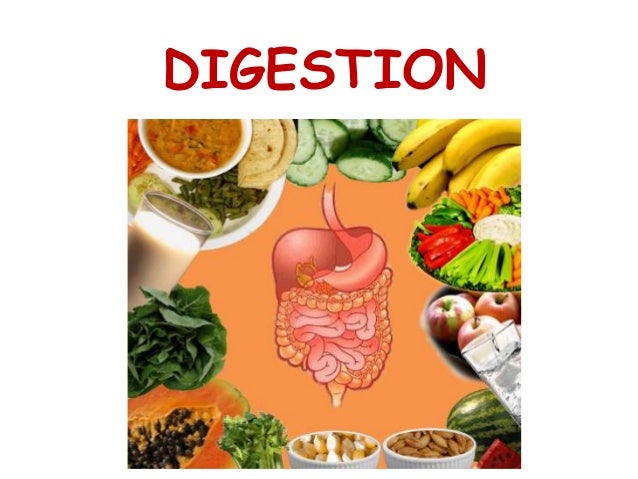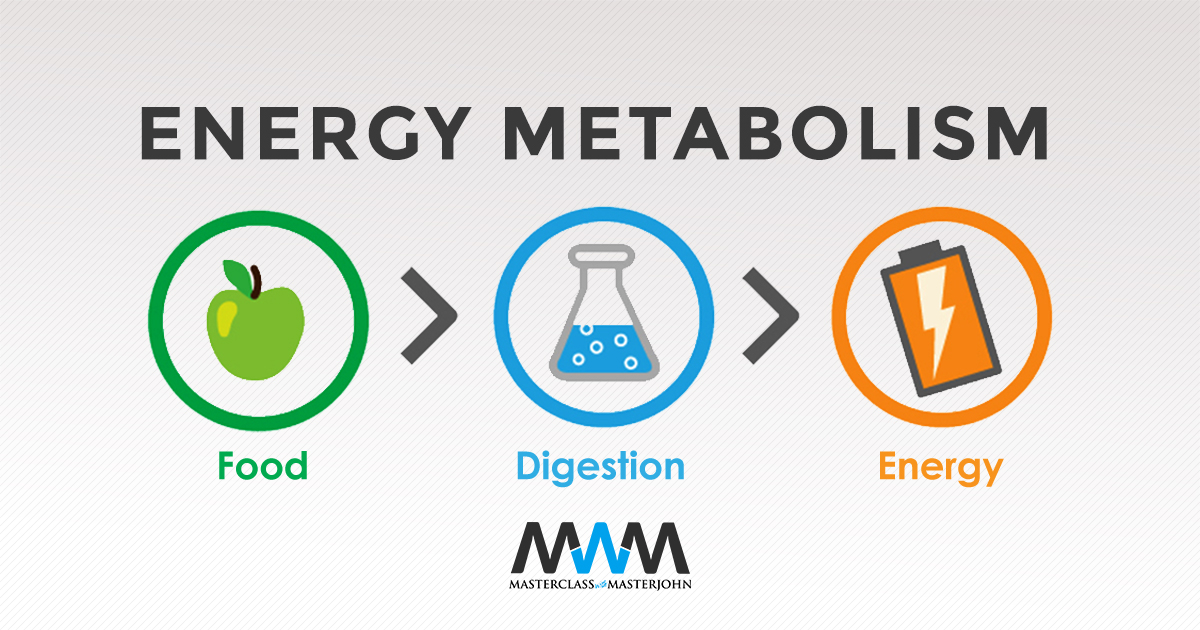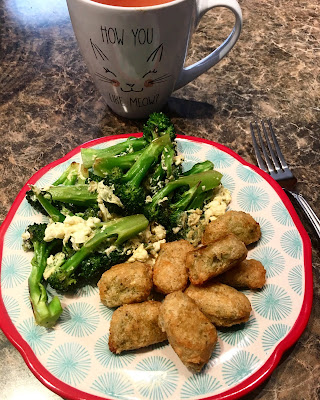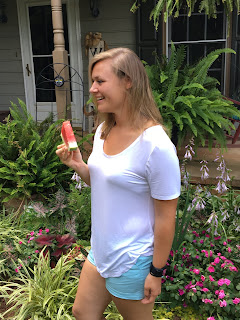"DIET"...It's a Bad Word

How many of you have gone on a diet? To be honest, who
hasn’t? In the past, I have definitely tried different fad
diets. When I was a young teenager, I told myself I would only eat fruit
to lose weight. As I got older, I thought restricting my calorie intake through
skipping meals, only eating almonds and carrot sticks for lunch, and exercising
all the time would make me lose weight. Do you want to know what
the outcome of all these “diets” were? I lost weight! But, as
soon as I lost the weight and started eating real foods again, I gained it all
back. You see, the problem was not that I was eating bad foods--it was that I
did not know how to eat. I did not understand how the body works and why
it needs energy.
Let’s look at some popular diets and see what they all have in
common. In general, when people “diet” they are on a special food
plan and usually restrict certain food items solely to lose weight. Diets
like Atkins, NutriSystem, and Jenny Craig are specific, planned out meals that
are sent to the consumer ready to eat (with minimal preparation involved). These
programs are carefully thought out by their inventors generally based on calories—calories
in, calories out. These programs for sure can help you lose weight, but
when we stop purchasing these products, we don’t know how to eat for ourselves.
People get in the routine of the prepackaged meal that when it comes down to a
free-range way of eating, we don’t know where to begin.
Weight Watchers is one of those diets where you kind of have
free range in what you eat as long as you keep up with the points system. This
diet is actually somewhat of a better way to track your diet because you have
the ability to make the decision on what to eat. However, we can get so
preoccupied on that point system to where we become obsessed with food but not
in a healthy way. It is a constant battle of “oh this has 10 points, and I am
only allotted 23 in one day” or “fruits are free! I can eat as much as I want
to”.
Another somewhat recent diet immersion is the keto diet. I
scroll through Facebook and Pinterest and see keto recipes and products that
made me wonder...are people really putting their bodies in ketosis to lose
weight?
Ketosis is a metabolic state characterized by raised levels of
ketone bodies in body tissues. This is usually the result of a diet that
is very, very low in carbohydrates.
In my profession, the keto diet is primarily used in children who
are diagnosed with epilepsy. The thought behind the keto diet for epilepsy and
some other nervous system diseases is to utilize ketone bodies (made from fat)
instead of glucose (from carbohydrates) to help reduce seizures. Typically, our
bodies utilize glucose to make energy, but when we restrict glucose (and
I mean truly restrict carbohydrate intake), our bodies go into a mode of
starvation-ketosis. Scientists are still researching exactly how it can help
seizures, but statistics show that the keto diet truly only benefits about 1/3
of people who have epilepsy.
Below is a diagram of what a true keto diet for epilepsy
consists of.

This diet is majorly fat, little bit of protein, and even less
carbohydrates. Though this may benefit someone with a nervous system disease,
for the average American who wants to lose weight, this diet may not be the
answer.
Many people on a true keto diet may struggle with constipation
because the diet is heavily fats and extremely low in carbohydrates, meaning
fiber is difficult to get unless supplemented.
Sources of fiber: fruits, grains, vegetables which brings me to
my next point.

Many of us know what foods contain carbs. Grains and fruits contain about 15 grams of carbohydrate per serving. In the keto diet, 1 serving of carbs is about all you would be eating daily. However, people generally do not think about vegetables containing carbs. Vegetables contain about 5 grams of carbs per serving. One half a cup of cooked broccoli contains 5 grams of carbs, but let's be real...who only eats 1 serving of cooked broccoli? I know I consume at least 1 full cup which would contain 10 grams of carbs...but that is okay. There are so many other vital nutrients in vegetables (and fruits) that our body truly needs! Fiber, vitamins, minerals, CARBOHYDRATES.
Carbs are the body's main source of energy, and when you
restrict carbs to lose weight, it can hinder the metabolic process. Take it
from me. I have restricted, and I have lost weight, but it was not until I made
a true lifestyle change and developed a healthy relationship with food that I
lost weight AND kept it off. You see, the more a person restricts, the harder
it gets for the body's metabolism to work the way God intended it to. The older we get, the slower our metabolism is, especially if we have spent our lifetime restricting vital nutrients.

Many of you may be thinking, "how do I make this lifestyle
change when we live in a world that promotes dieting?"
In all honesty, from what I have observed through Facebook and
other social media sites, what the general public is calling the "keto
diet" is actually a very clean way of eating...it is just not the
true keto diet that is being used for epilepsy. The popular diet is generally
low in refined carbohydrates (meaning low in processed breads, pastas, cereals,
etc), high in fruits and veggies, adequate in protein and fats...essentially
people are treating the "keto diet" as a "low carb" diet,
but not dangerously low carb.
Wouldn’t it be nice if we could somehow trick our minds into
thinking of food as fuel for our bodies, vital nutrients we need, and keep us
trim? You see, the reason I hate the word “diet” is because I constantly
hear people say “oh, I am starting my diet tomorrow” or “I’m trying to lose
weight…I should go on a diet”, but we really shouldn’t be. One of the
most enjoyable parts of life is enjoying what we eat. I hear all the time
“eating healthy just isn’t as good as the real stuff”, but the beauty of food
is that we can be creative and make it taste good! Making a lifestyle
change instead of going on a fad diet can do a multitude of things for us. Not only will it keep our waists slim, but it will help us develop a healthy
relationship with food.
My challenge for you is to not promote any diet but to promote a
lifestyle change. When you promote a lifestyle change, you won’t be on any
diet! Your typical diet will be your lifestyle. The beauty of it is that you
will be more likely to lose weight AND keep it off instead of doing a diet for
30 days all to go back to eating the way you used to.
When you make a true lifestyle change, you are transforming the
way you used to eat, and the more you practice your lifestyle change the more
it becomes like second nature. It may take small changes along the way such as
drinking water instead of juice, or choosing natural peanut butter instead of
highly processed, hydrogenated nut butters. Those small changes you make along
the way do indeed make a difference.
Helpful Tips: Build Nutritious Meals
Below I am giving you a guide on how to make your meals balanced
and filling with whole, fresh ingredients. My rule of thumb is to make half my
plate loaded with veggies, a fourth of grains/starch, and then the other fourth
of protein. If you always need to end a meal on a sweet note, I recommend fresh
fruit.
Breakfast: Base + veggie/fruit + lean protein
Example 1: Banana-Berry Oats
- ½ cup dry oatmeal cooked in ½ cup unsweetened almond milk and ½ smashed banana (cooking in the banana will release sweetness and add a thicker texture)
- Add: ½ cup berries (of your choice); if you wanted to add veggies here, ½ cup riced cauliflower adds a nice texture, and it's essentially tasteless in the oatmeal!
- Add: 1-2 tablespoons of nut butter of choice. I like using powdered peanut butter in oatmeal, but if you like to use the real stuff, look for a natural nut butter with less than 2 grams of sugar per serving
Example 2: Veggie Eggs/Egg Whites
- 1-2 Eggs (or 2-3 egg whites) cooked in a little butter or coconut oil (higher smoke point for frying eggs), add in sauteed spinach, onion, mushrooms, and asparagus (really whatever veggies you like!) If you wanted to add more flavor and protein, you could add a touch of shredded cheese or feta. Just a dabble! A little cheese goes a long ways.
- Pair meal with some fresh fruit of choice. Chopped pineapple or melon goes well with scrambled harvest eggs.
Lunch/Dinner: Base + Protein + Healthy Fat + Starch
Example 1: Hearty Salads
- I like to do salads for lunch loaded with veggies and some sort of protein, typically 2 varieties (I like to choose from boiled eggs, cheese cubes or feta cheese, grilled chicken/steak, baked tofu, or some sort of veggie patty). I am not a salad dressing lover, but if used, try to stick with 1-2 tablespoons. If you are like me ad not a huge dressing fan, try smashed avocado with lemon juice, salt and pepper to drizzle over your salad. That will add in some healthy fat and tangy flavor.
- If you still need something substantial after the salad to get you through the afternoon, have some fresh fruit for dessert. A banana with a smear of natural nut butter usually does the trick for me.
Example 2: Buddha Bowls
- Super trendy now, and they can basically have anything in them!
- Roast up some veggies of choice…I think sweet potatoes, chickpeas, broccoli, and snow peas are a great combo.
- Serve over quinoa, brown rice, or cauli-rice
- Protein of choice. I think tofu is a great addition to this meal, but you could use baked/grilled/broiled chicken, fish, or beef. Drizzle over some homemade tahini sauce (tahini, lemon, apple cider vinegar, salt and pepper to taste-several recipes on Pinterest)
Example 3: Bun-less Burgers
- When I have a burger night, I use 93% lean ground turkey (you could use ground chicken or beef, just go lean) and season to my likes-usually my husband does that part as I am not the best meat-cooker. If vegetarian, black bean patties are a good option.
- If you want the bread, go for a 100-calorie,100% whole wheat/grain flat bread bun,. If you are like me and try to stay away from highly processed products, chop up a nice garden salad and add your burger patty on top. Top with your favorite veggies and a little cheese and it’s a bun-less-burger on a plate!
- Many stores are selling cauliflower and broccoli tots now, and they are delicious! They do contain some extra fillers, but hey, less carbs, calories and fat than regular fries! And you are getting some fiber and nutrients in there as well.
EXERCISE.
I must also add the importance of consistent, regular physical
activity. Find what is fun for you! You do not have to lift weights or go
run. Try something you have never done before! Just recently, I tried
road biking with my husband. I always thought I would hate biking because I
have short legs and open roads freak me out, but I bit the bullet and tried
it...now I love it! Challenge for the week: Try 30 minutes of an exercise
activity you have never done before. You may discover a new hobby.
Happy Chewing!
Katrina Detter, RD, LDN
Registered Dietitian
Licensed Dietitian Nutritionist
Instagram: kgrantdetter_rd
Sources:
- Ketogenic Diet. Epilepsy Society. https://www.epilepsysociety.org.uk/ketogenic-diet. Published March 1, 2018. Accessed June 13, 2018.
- Precision Nutrition (2018). The Ketogenic Diet: Does it live up to the hype? The pros, cons, and the facts about the no-so-new diet craze. [online] Available at https://www.precisionnutrition.com/ketogenic-diet. Accessed June 13, 2018.
- Popsci.com. (2018): Consent Form | Popular Science. [online] Available at: https://www.popsci.com/not-in-ketosis. Accessed June 13, 2018.





Awesome reading, enjoyed reading this :)
ReplyDelete